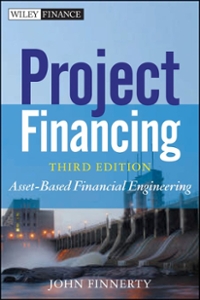


- Does ABC appear to be in reasonable shape financially, or is it having financial difficulty?
- What areas might need to be improved to get the business on a better financial footing?
ABC Retail Store BALANCE SHEET End of year 1 9,000 17,000 185,000 27,000 $238,000 0 0 40,000 40,000 0 0 0 0 18,000 18,000 $ 58,000 $296,000 ASSETS Current Assets: 1. Cash 2. Accounts Receivable 3. Inventory 4. Other Current Assets A.Total Current Assets Fixed Assets 5. Land and Buildings less depreciation 6. Furniture and Fixtures less depreciation 7. Equipment less depreciation 8. Trucks and Automobiles less depreciation 9. Other Fixed Assets less depreciation B.Total Fixed Assets C.Total Assets (C = A + B) LIABILITIES Current Liabilities (due within 12 months) 10. Accounts Payable 11. Bank Loans/Other Loans 12. Taxes Owed D. Total Current Liabilities Long-term Liabilities 13. Notes Payable (due after one year) 14. Other Long-Term Liabilities E. Total Long-Term Liabilities F.Total Liabilities (F= D+E) NET WORTH (CAPITAL) SHARE CAPITAL Common Shares Preferred Shares RETAINED EARNINGS G.Total Net Worth (G=C-F) H.Total Liabilities and Net Worth (H = F +G) 97,000 29,000 $126,000 100,000 59,000 $159,000 $285,000 1.000 0 10,000 $ 11,000 $296.000 ABC Retail Store INCOME STATEMENT For the Year (date) $526,000 0 $526,000 $167,000 361,000 $528,000 181,000 $347.000 $179,000 1. Gross Sales 2. Less: Cash Discounts A. NET SALES Cost of Goods Sold: 3. Beginning Inventory 4. Plus: Net Purchases 5. Total Available for Sale 6. Less: Ending Inventory B. COST OF GOODS SOLD C. GROSS MARGIN Less: Variable Expenses 7. Owner's Salary 8. Employee's Wages and Salaries 9. Supplies and Postage 10. Advertising and Promotion 11. Delivery Expense 12. Bad Debt Expense 13. Travel 14. Legal and Accounting Fees 15. Vehicle Expense 16. Miscellaneous Expenses D. TOTAL VARIABLE EXPENSES Less: Fixed Expenses 17. Rent 18. Repairs and Maintenance 19. Utilities (Heat, Light, Power) 20. Telephone 21. Taxes and Licences 22. Depreciation 23. Interest 24. Insurance 25. Other Fixed Expenses E. TOTAL FIXED EXPENSES F. TOTAL OPERATING EXPENSES G. NET OPERATING PROFIT (LOSS) 40,000 41,000 0 10,000 3,700 0 0 2,600 0 24,700 $122,000 15,300 4,200 4.800 1.000 1.000 5,300 10,000 2,600 2,600 $ 46,800 $169,000* $ 10,000 a. Current Ratio Current Assets Current Liabilities b. Quick Ratio = Current Assets - Inventories Current Liabilities Debt-to-Net-Worth Ratio Total Outstanding Current and Long-Term Debt Net Worth C. d. Gross-Profit-to-Sales Ratio Gross Profit Net Sales e. Net-Profit-to-Sales Ratio Net Profit (before or after taxes) Net Sales f. Return on Assets Net Profit (before or after taxes) Total Assets Net Sales g. Sales-to-Inventory Ratio (Beginning Inventory + Ending Inventory) = 2 Accounts Receivable h. Average Collection Period Net Sales = 365









